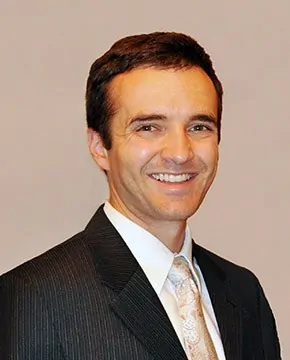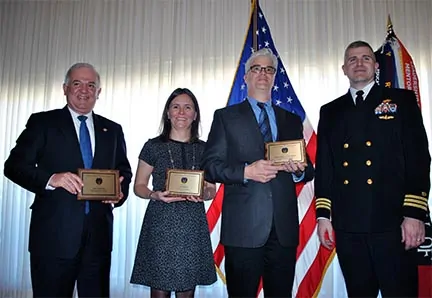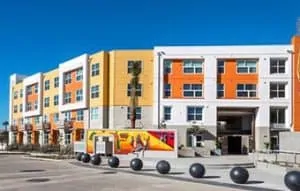

The Long Beach Business Journal published an article in February about the role of engineers in infrastructure design and investment. With discussion of an immense $1 trillion outlay at the federal level in the news, the LBBJ took a look at the roles engineers play in every aspect of infrastructure development.
President and CEO, Jim Walsh discusses the purpose SCS Engineers plays as an environmental consultant and contractor on infrastructure projects ensuring they meet environmental needs, as well as economic ones.
On March 1, each year facilities that use hazardous chemicals in specific quantities must file an EPCRA Tier II report identifying the chemicals with the State Emergency Response Commission, the Local Emergency Planning Committee, and the local fire department.
Easy to avoid mistakes and omissions in Tier II filings may lead to civil penalties of as much as $54.8K per day. Most cited violations involve just a few common chemicals such as ammonia, sulfuric acid inside equipment, and an EHS that is a component of mixtures. These are often overlooked or thought to be exempt from reporting because the threshold for reporting may be low.
Rather than risk non-compliance, ask the professionals at SCS Engineers about common chemical thresholds, voluntary self-disclosure, and EPA’s audit policies.
Read our most recent EPCRA Technical Bulletin, or contact us at .
We hope you find this Waste360 article helpful.
http://www.waste360.com/fleets-technology/what-s-next-route-optimization
Other related articles of interest include financing and rate studies see Solid Waste Management Services at SCS Engineers.
Rogoff will be leading a panel at this year’s WasteExpo in New Orleans. The session on Route Optimization Management will take place on Monday 8 at 9:00 AM. See more presentations and topics at Waste Expo 2017.
Chad Milligan, P.G. of SCS Engineers is presenting a holistic approach to water quality treatment at mines.
About the Presentation:
Disposal of produced fluids from industrial processes is becoming more challenging with time. Options such as surface discharge through NPDES or trucking can be cost prohibitive, requiring an evaluation of alternative methods such as disposal via deep will injection.
Such problems have arisen for three coal mines in Illinois. Two of the mines generate high chloride native groundwater that infiltrates the mine and is then pumped to surface retention ponds prior to treatment and disposal. The third mine generates fluids from multiple sources including a coal fire power generating plant and a coal combustion residual landfill. These fluids will be also stored in surface retention ponds prior to treatment and disposal.
An evaluation was performed of the treatment and disposal of native groundwater infiltrating the mines using a holistic approach. The approach includes an evaluation of the water quality by assessing the chemical and physical characteristics of water, water quantities, water treatment system, geochemistry, and applicable disposal well characteristics. Current evaluations have identified specific minerals that may be precipitating within the disposal well diminishing well capacity and biological fouling originating within the mine itself that has substantially increased pretreatment filtering costs.
The treatment and disposal of produced powered generating fluids has introduced a new level of review by not only including the general physical and chemical characteristics of water treatment, but also the review and evaluation of the plant-wide water budget identifying the source of fluids within the plant, and also a thorough characterization and review of solid waste regulations such as the Resource Conservation and Recovery Act.
This presentation will compare the source and treatment options of the produced waters from these three coal mines.
About Chad Milligan
Chad Milligan is a licensed professional geologist in the states of Kansas, Louisiana, and Illinois. He has a Bachelors degree in Environmental Chemistry from Emporia State University and a Master’s degree in Environmental Science from Wichita State University. Chad is responsible for the permitting and regulatory compliance of Class I and Class II disposal wells, Class III salt solution mining wells, LPG storage caverns, and Class V cavern stabilization wells.
SCS periodically prepares technical bulletins to highlight items of interest to our clients and friends. These are published on our website. This SCS Technical Bulletin addresses the Emergency Planning and Community Right-to-Know Act (EPCRA). The purpose of specific sections are consolidated and explained by SCS professionals; specifically:
SCS Engineers welcomes the sharing of resources and respects your privacy – we do not track what is shared from our website. Use the icons featured at left to share this information using your email or social media.
SCS will continually update coverage of this issue on our website blog and SCS social media channels on LinkedIn and Facebook. To follow SCS on social media click the respective icon at the top of our home page.
If you have any questions regarding this technical bulletin, feel free to contact your local SCS Engineers representative, email us at , or contact our professionals listed on the Technical Bulletin.
At the upcoming USWAG CCR Workshop Feb 22-23 in Arlington, VA, Steve Lamb and Floyd Cotter of SCS Engineers will present a session about the advantages and disadvantages of emerging alternative capping options, and how different regulatory agencies are viewing these options.
About this Session: Traditional final cover and capping design for coal combustion residual (CCR) surface impoundments and landfills have included compacted soil liner, geomembrane liner, drainage layer, and a vegetative soil cover. But coal-fired plants oftentimes don’t have the large volumes of soil that it takes to implement these options.
Alternative capping options have recently emerged in the industry such as exposed geomembrane liners or synthetic turf/geomembrane liner systems. Some of these alternative capping options have many advantages over their traditional counterparts. These advantages include faster installation times, minimal need for soil, improved storm water quality, and reduced maintenance and post-closure costs. For surface impoundments, alternative capping designs can also greatly reduce the amount of disturbance of the existing CCR material within the impoundment.
About Steve Lamb: Steve Lamb, PE provides SCS with over 27 years of experience in solid and hazardous waste management, environmental engineering, civil engineering, hydrology and hydraulics, landfill engineering, remedial design, and regulatory compliance. Mr. Lamb is a Vice President and director of SCS’s Charlotte, NC office.
About Floyd Cotter: Floyd Cotter specializes in solid waste management projects. His project work involves all areas of solid waste management including planning, permitting, transportation, landfill design, construction, and monitoring. Mr. Cotter is also experienced in general civil engineering, construction oversight, environmental site assessments, closure and post-closure plans, and permit and contract document preparation.
“Dave Hostetter sets the example of how an honorable, dynamic, and experienced engineer acts at SCS,” said Paul Mandeville, Senior Vice President and Director of SCS’s offices on the east coast. “Dave serves as a model of what young professionals and students should strive to become in their professional careers; we are very proud of him.”

Dave Hostetter, a recent graduate of the SAME DC Post’s 2015 Leadership Lab was honored to receive the Society of American Military Engineers Honorable Mention for Outstanding Contributions by Young Civilian Member. Dave is a registered professional engineer, a LEED Accredited Professional (LEED AP) through the U.S. Green Building Council, and a Certified Energy Manager (CEM) at SCS Engineers.
Throughout his career he has focused on three things: using his engineering skills to make a difference in the world, serving his clients wholeheartedly, and mentoring others. These guiding principles have led him through many fields of engineering from HVAC and plumbing engineering to energy engineering to landfill gas engineering to controls system engineering.
From 2012 to 2013 Dave was the site project manager for a large retro-commissioning project of two hospitals in the Veterans Integrated Service Network (VISN) 3. More than 1,500,000 square feet of building space were retro-commissioned. Throughout this project, he worked diligently to identify hundreds of issues with the building HVAC systems and create recommendations for each one. His recommendations were projected to save the VA approximately $200,000 / year and have an average payback period of approximately 0.2 years.
In 2016 Dave engineered and installed a unique environmental monitoring system for a client at a port in New Jersey. The client had an air monitoring program which required them to monitor the air quality at six different points around the port on a daily basis. Their original process was time-consuming and was, therefore expensive. Dave engineered and installed a system of wireless sensors which communicate air monitoring data back to an online database. This online database allows the client to view current and historical data, it automatically generates a daily summary report, and it sends out alarms when one of the measured parameters exceeds its alarm setpoint. This new system has reduced the client’s expenditure on labor, saved costs and resources, and increased their ability to understand and respond to the results from their environmental monitoring system.
Dave mentors other young professionals at SCS by involving them in real life hands-on engineering projects. These projects include some sort of equipment installation or troubleshooting work which allows the young engineers to actually see how things are installed, ask good questions on how things work, get face-to-face time with a senior level engineer, and learn valuable lessons on risk and safety management in specific situations.
Dave’s expertise was developed as the result of SCS professionals taking the time to mentor him in the same manner, and his goal is to pass the learning technique and knowledge on to others.
Dave lives the SCS Engineers mission statement to:
Clients trust him for his honest and comprehensive approach to their challenges. Dave takes ownership of his work and puts in the time and effort to deliver excellent results and maintain a great relationship with his clients.
Congratulations, Dave!
The Society of American Military Engineers recognized SCS Engineers for their 15 years of service and volunteer support at the District of Columbia post this month. The award was presented by Commander Craig Clutts of the US Navy, the Outgoing DC Post President.
On hand to receive the award for SCS was John Tabella, PG, LEED AP®, National Expert for Environmental Due Diligence and for Federal Services; Heather Blake (pictured), Federal Marketing Coordinator, and Dave Hostetter, PE, LEED AP®, and CEM at SCS Engineers.

SCS Engineers has a very long track record of solving environmental and energy management, solid waste, hazardous waste, water, and air compliance challenges. Approaches we pioneered include risk-based cleanups, voluntary cleanups, accelerated investigations, presumptive and sustainable remedies, environmental management systems, energy systems, and waste minimization. These approaches are at the forefront of local and Federal environmental and energy programs today.
SCS provides professional engineering and scientific services with a focus on environmental protection and conservation of resources. Our clients come back because we find practical approaches to even the most complex environmental challenges.
SCS’s environmental services supporting COMM22, a mixed-use, mixed-income redevelopment project in San Diego will be recognized at Environmental Industry Summit XV

When the Environmental Business Journal (EBJ) presents its 19th annual Business Achievement awards this March, SCS Engineers will receive an award of Project Merit: Redevelopment, for its investigation and design program for COMM22, a multi-family residential development by BRIDGE Housing.
COMM22 is a mixed-use, mixed-income, transit-oriented development built on a former bus maintenance facility. SCS addressed several issues including underground storage tanks and the testing of fill soils. The firm’s pre-construction characterization and three-dimensional data analysis resulted in time and budget savings.
“Our remediation effort on this property ensured that human health and the environment were protected as cost-effectively as possible,” said Dan Johnson, vice president of SCS. “Affordable housing is important to San Diego communities and we applaud the work of BRIDGE Housing and the collaboration it takes to create urban projects like this.”
BRIDGE Housing Corporation, a leading nonprofit developer of affordable housing, creates and manages a range of high-quality, affordable homes for working families and seniors. Since it was founded in 1983, BRIDGE has participated in the development of over 16,000 homes in California and the Pacific Northwest.
More award-winning redevelopment projects of interest:
Petco Park and East Redevelopment – San Diego
Emerald Ridge Homes – East Alton
NFL Stadium Site – Los Angeles
Commercial Real Estate Transactions blog
The complexity of regulations that govern the disposal of coal combustion residuals (CCR) is growing. We expect the pace of change will also increase based on recent headlines. To help you successfully address these ever-changing regulations and stay focused on serving your customers, SCS Engineers uses our Advice From the Field blog and Technical Bulletins.
Using the SCS Advice blog we recently posted a short overview of the WIIN Act and highlights of how the Act is being received. This is just the start. In the coming weeks and months, SCS Engineers’ staff will bring you timely, relevant updates and interpretations of the WIIN Act and other changing regulations. Most importantly, we’ll recommend what to do next, steps you should consider taking and when to take them so that you’re ready for whatever changes come.
Follow the SCS blog on LinkedIn or Facebook for the latest information about coal combustion residuals regulations, and to participate in the conversation that’s shaping our industry. Or contact us at if you have questions.
SCS periodically prepares Technical Bulletins to highlight items of interest to our clients and friends. These are published on our website. For example, this SCS Technical Bulletin addresses Inactive Surface Impoundments and EPA Direct Final Rules for Disposal of Coal Combustion Residuals from Electric Utilities.
About Eric Nelson, SCS Engineers CCR National Expert